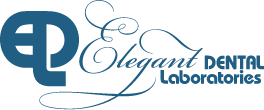Benefits of Dental Digital Scanning/Impression for implants
14 April 2022

Dental digital scanning/impressioning makes it possible for dentists to map their patient’s oral cavity. A digital scanner consists of a wand-like device that attaches to a cord on a computer. The computer has scanner software that helps provides the final result of the dental scan. The dentist inserts the wand into the patient’s mouth and glides it across the bridge of the bottom and top teeth. As the scanner moves, the computer captures a digital impression of the patient’s oral cavity.
Difference between traditional and digital scanning/impressioning
Several differences exist between digital scanning and impressioning procedures and traditional methods, such as those listed below.Risk of introducing errors
Traditional impressions required more materials and steps. The process of creating impressions is delicate, and it is easier to introduce errors with traditional impressions due to material defects, improper settings or the human element.Number of visits
In most cases, digital impressions eliminate the need for return visits to a dentist’s office. Dentists can fabricate restorations quickly in the office, and the patient can have dental work done in a single visit.Comfort and convenience levels
With traditional impression techniques, dentists place impression materials in the mouth for up to five minutes. This process is usually uncomfortable, especially for patients who are afraid of gagging. Digital techniques use a scanner to capture the digital impression of the patient’s mouth quickly and effectively.Accuracy
With traditional impression techniques, the dentists rely on a visual evaluation to determine if the impression is ready for shipping to a laboratory. Because the images are in negative form, it is more difficult to identify mistakes. If the dentist identifies mistakes, the patient has to go through the entire process again. This can be uncomfortable and inconvenient, often resulting in wasted time, money and materials for the dentist and patient. This is not the case with digital impressions as the dentist can magnify the image so that he or she can evaluate it properly. If missing any portion in the first digital scan, some digital impression systems allow the oral professional to take a scan of the particular spot without redoing the entire process. This follow-up scan only replaces the voided image without presenting new errors, filling in any missing data from the original digital impression.Benefits of digital scanning and impressioning
Patients can enjoy many benefits from this process, including:- Less chair time
- Improved quality of images for better-fitting restorations
- Eliminates the need for uncomfortable and distasteful restoration materials that may cause gagging
- Ensures more comfort and less anxiety for patients
- Reduces the likelihood of errors and material inaccuracies
- Storing impressions digitally makes it possible to keep them for a long time, saving space and ensuring efficient recordkeeping
- Supports a paper-free environment and eliminates the need for disposable impression and materials and plastic trays, making it eco-friendly





